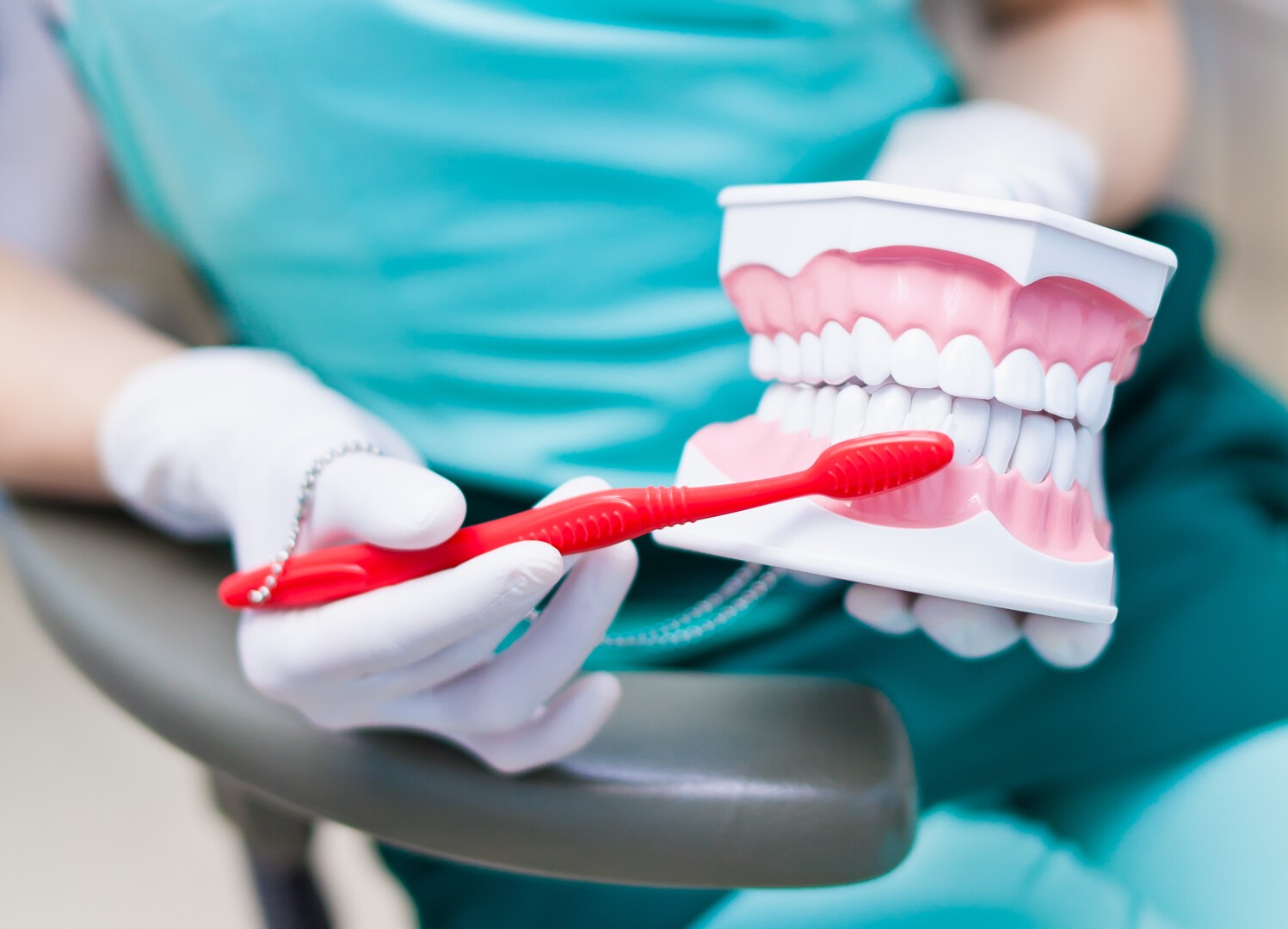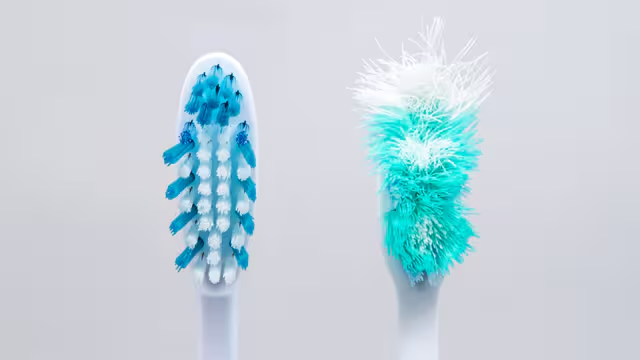Helping Patients Make Hygienic Decisions
As dental professionals, we know that proper oral hygiene is crucial for maintaining healthy teeth and gums. One of the simplest yet most important tools for this is the humble toothbrush. Despite its simplicity, there’s often confusion among patients about how often they should swap out their toothbrush. This article aims to clarify this topic and provide you with information that you can share with your patients to help them maintain optimal oral health, and to finally answer the question: How often should you change your toothbrush?

The Importance of Replacing Your Toothbrush
A toothbrush is essential for removing plaque, food particles, and bacteria from the teeth and gums. Over time, the bristles on a toothbrush wear out and become less effective at cleaning. Worn-out bristles can also cause damage to the gums and tooth enamel, leading to a higher risk of dental issues such as cavities and gum disease.
Additionally, toothbrushes can harbor bacteria, fungi, and other microorganisms. While these are generally harmless, they can contribute to oral infections, especially if the toothbrush is not stored properly or if it’s used beyond its recommended lifespan.
General Guidelines for Replacing a Toothbrush

The American Dental Association (ADA) recommends replacing your toothbrush every three to four months. This timeframe is based on studies that show the effectiveness of a toothbrush diminishes after this period due to bristle wear. However, there are several factors that can influence this general guideline:
Bristle Condition: If the bristles are frayed or worn before the three-month mark, it’s time for a new toothbrush. Frayed bristles are less effective at cleaning teeth and can damage gums.
Illness: If you’ve been sick, it’s a good idea to replace your toothbrush once you’ve recovered. This helps prevent the spread of germs and reduces the risk of re-infection.
Children’s Toothbrushes: Children often brush their teeth more vigorously than adults, causing their toothbrushes to wear out faster. As a result, you may need to replace their toothbrushes more frequently.
Orthodontic Appliances: For patients with braces or other orthodontic appliances, toothbrushes may wear out more quickly due to the increased need for thorough cleaning around brackets and wires.
Special Considerations for Electric Toothbrushes
Electric toothbrushes, particularly those with replaceable heads, also need regular replacement. The ADA suggests replacing the brush head of an electric toothbrush every three to four months, or sooner if the bristles are frayed. The principles are the same as for manual toothbrushes: worn bristles are less effective and can cause harm.
Educating Patients About Toothbrush Care
As dental professionals, part of our role is to educate patients about proper toothbrush care to ensure they get the most out of their oral hygiene routine. Here are some tips to share with your patients:
Rinse Thoroughly: After brushing, rinse the toothbrush thoroughly with tap water to remove toothpaste and debris.
Store Upright: Store the toothbrush in an upright position and allow it to air-dry. Avoid covering the toothbrush or storing it in a closed container, as this can promote the growth of bacteria.
Avoid Sharing: Emphasize the importance of not sharing toothbrushes, as this can spread bacteria and increase the risk of infections.
Inspect Regularly: Encourage patients to regularly inspect their toothbrush for signs of wear and replace it if the bristles are frayed, even if it hasn’t been three months.
Addressing Common Patient Concerns
Patients often have questions and concerns about their toothbrushes and oral hygiene routines. Here are some common questions and how to address them:
“Can I sanitize my toothbrush to make it last longer?”
While some people soak their toothbrushes in mouthwash or use a toothbrush sanitizer, the ADA states that there’s no evidence to support that this extends the life of a toothbrush. Regular replacement is still necessary.
“What if I use a soft-bristled toothbrush?”
Soft-bristled toothbrushes are recommended by dental professionals because they are gentle on the gums and enamel. However, they still need to be replaced every three to four months, or sooner if the bristles become frayed.
“How do I know if my toothbrush is worn out?”
Show patients examples of worn-out toothbrushes compared to new ones. Explain that bristles that are splayed, bent, or frayed are less effective at cleaning teeth and can damage the gums.
“Is there a difference between manual and electric toothbrushes in terms of replacement frequency?”
Both manual and electric toothbrushes need to be replaced at similar intervals—every three to four months. Emphasize that the key factor is the condition of the bristles.
The Impact of Regular Toothbrush Replacement
Regularly replacing toothbrushes is a simple yet powerful way to maintain oral health. Studies have shown that using a toothbrush with intact bristles removes more plaque and reduces the risk of gingivitis compared to using a worn-out toothbrush. For patients, this translates to fewer dental problems and a healthier smile.
Moreover, reinforcing the habit of regular toothbrush replacement can improve overall patient compliance with oral hygiene recommendations. When patients understand the importance of this practice, they are more likely to adhere to other aspects of their oral care routine, such as regular brushing, flossing, and dental visits.
Conclusion
As dental professionals, we play a vital role in guiding our patients toward effective oral hygiene practices. By educating them about the importance of regular toothbrush and toothpaste replacement and providing practical advice on toothbrush care, we can help them achieve and maintain optimal oral health. Remember, a well-informed patient is a healthier patient. Encourage your patients to replace their toothbrushes every three to four months, or sooner if needed, to ensure they are getting the best possible care for their teeth and gums.




